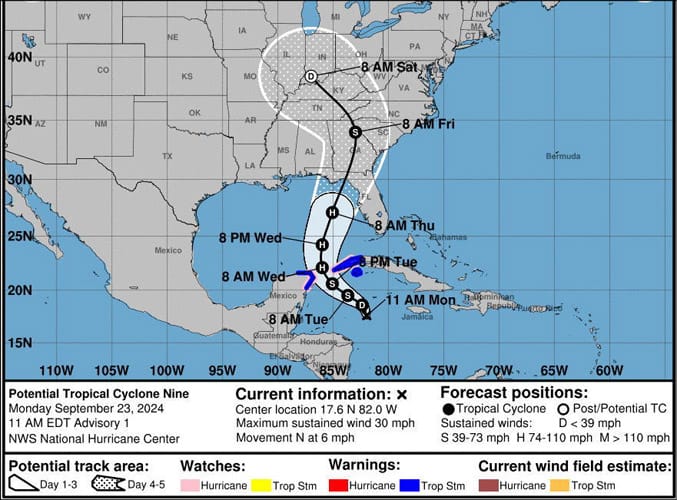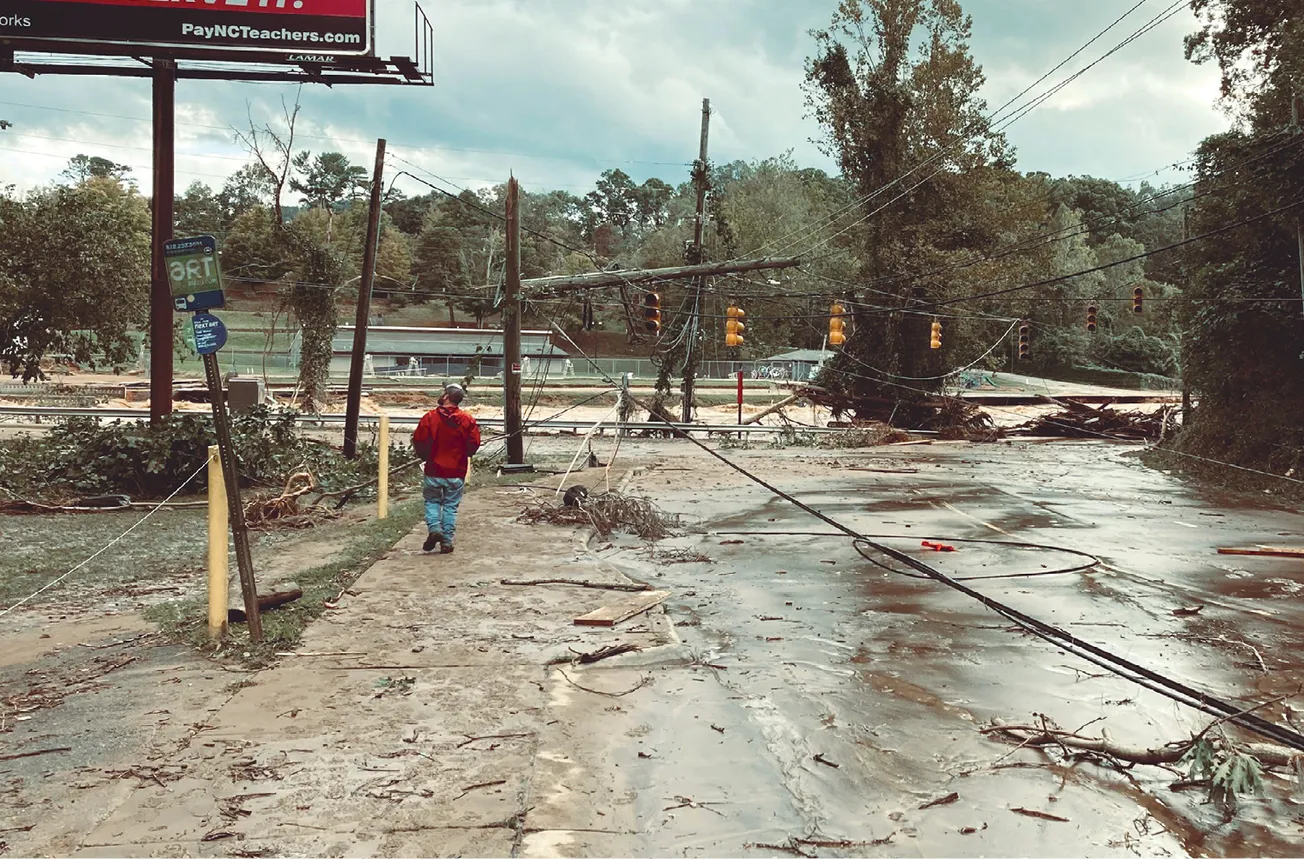Nov. 6—Hurricane Helene made landfall on Florida’s Gulf Coast Sept. 26, then proceeded northward on a 500-mile storm path, crossing into Georgia, South Carolina, North Carolina, Tennessee, Kentucky and southwestern Virgina. It wrought massive destruction of homes, workplaces, community centers, places of worship, hospitals, rail, roads, and electricity grids, wiping out whole towns in southwestern North Carolina.
All features of the fierce storm were extreme. The storm surge on the Florida coast reached 11 feet; wind speed was 140 miles per hour going into Georgia; wind gusts as far inland as South Carolina caused vast power outages; torrential rains caused flooding. Helene’s impact revealed the inadequacy of the U.S. infrastructure base, from shoreline defenses, to a modern power grid system, to flood control infrastructure.

But far and away, the most dramatic feature of the storm and lack of infrastructure was the vast flooding in the Appalachians in western North Carolina. In only three days, the town of Asheville received 13.98 inches of rain. All told, Busick, in the same region, got 30.78 inches in just a few days. Taking the official Helene death toll of 232 (other figures are given), 117 of them are from North Carolina. (The others are South Carolina: 48; Georgia: 33; Florida: 20; Tennessee: 12; Virginia: 2.) The real figure is no doubt higher and still rising, from follow-on causes.
The even bigger story than Helene’s weather extremes is that a project of flood defense infrastructure was proposed 60 years ago in western North Carolina, that would have prevented or mitigated death and destruction entirely! But it was thwarted and never built.
The Tennessee Valley Authority designed and proposed a package of dams and other waterworks in 1965, because the river through the Asheville region—the 219-mile long French Broad River—is within the watershed of the Tennessee River Basin. The French Broad flows down the western slopes of the Appalachians, and just east of Knoxville, joins the Holston River to form the Tennessee River.

Blame It on ‘Climate Change’
These facts about hurricane patterns, the history of obstruction of flood defenses and the like have not only been blacked out by the media and politicians, but even as the hurricane gathered force in the Gulf of Mexico, the population-reduction environmentalists, financed by the City of London and Wall Street, were proclaiming that the hurricane was spawned and/or intensified by global warming. They made the sole issue, “climate change.”
On Oct. 9, coming only two weeks after the storm, an ultra-environmentalist strike force known as the World Weather Attribution (WWA), based in Britain, released a report entitled “Climate Change Key Driver of Catastrophic Impacts of Hurricane Helene That Devastated Both Coastal and Inland Communities.” Their so-called study was just the linear output of their model’s assumptions that global warming determines all weather. The report lies that anthropogenic activity, which is heating up the Earth, is what caused Hurricane Helene and almost every other storm. They denounce such activities as human beings burning fossil fuels; carrying out energy-intensive, chemically-fertilized agriculture; and the building of capital-intensive industry and productivity-generating infrastructure. To the WWA, these factors are responsible for the ensuing destruction from storms. The WWA’s solution is to stop such physical economic development, build more low-energy-flux density “renewables,” and impose population-reduction.
The WWA is an alliance of environmentalist organizations, led by the Grantham Foundation, based out of both Imperial College in Britain and the London School of Economics. The Grantham Foundation is in an official alliance with the Royal Foundation, whose patron is King Charles III, and whose president is the Duke of Kent, a leading member of the British Monarchy. On Oct. 9, The New York Times plastered the British WWA’s study prominently on its pages, and other media, robot-like, followed suit.
This climate-change falsehood attempts to obscure the decisive reason for the wreckage triggered by Helene: that flood control–water management infrastructure for the affected areas was never built, which would have prevented much of the destruction. In the case of southwestern North Carolina, in the period 1965-72, the infrastructure was deliberately blocked by an alliance of rabid environmentalists, and fiscally conservative Republicans, a portion of whom shared the views of the old Confederacy.
The Tennessee Valley Authority, an expert agency in flood control, whose work was studied and emulated by China and dozens of other countries, proposed a scientific, integrated project for flood control of the French Broad River Water Basin (FBRWB), using dams, levees, retaining walls, and reservoirs. The above coalition, aided by Wall Street financing, ganged up to smear and halt the project.
Had the FBRWB and other similar projects been built, two-thirds to 90% of those who died in Hurricane Helene would still be alive today. Most of the destruction would never have ensued. That is the reality of Hurricane Helene. The fascist green movement itself, and its ideology in all its manifestations, in conjunction with President Richard Nixon’s August 1971 taking the dollar off the gold-reserve system, which produced a global casino economy and the accelerating collapse of the U.S. physical economy, are together the real causes of the path of death and destruction swept by Hurricane Helene.
Mankind can use its creativity and Promethean power of forethought and science, to use large rainfall from storms to provide massive flows of water for electricity generation, to irrigate deserts and regular cropland to produce food, and to produce abundant drinking water. Man abets and improves nature, making the biosphere bloom. It is such a perspective that the U.S. should at long last re-instate and act upon now.








